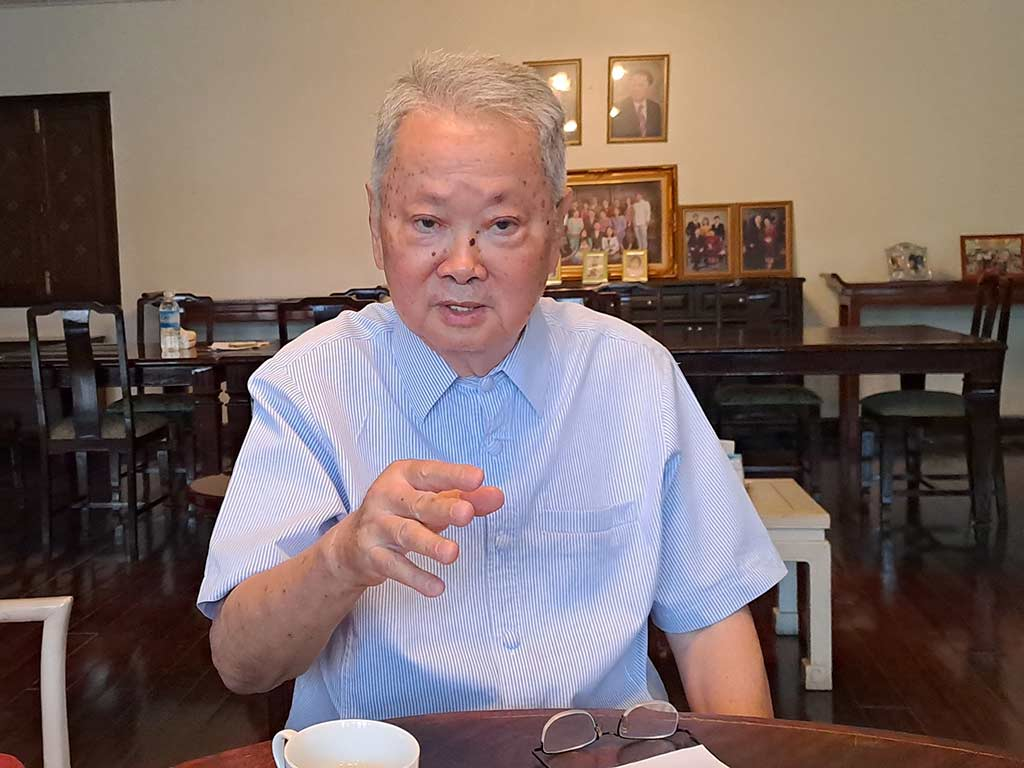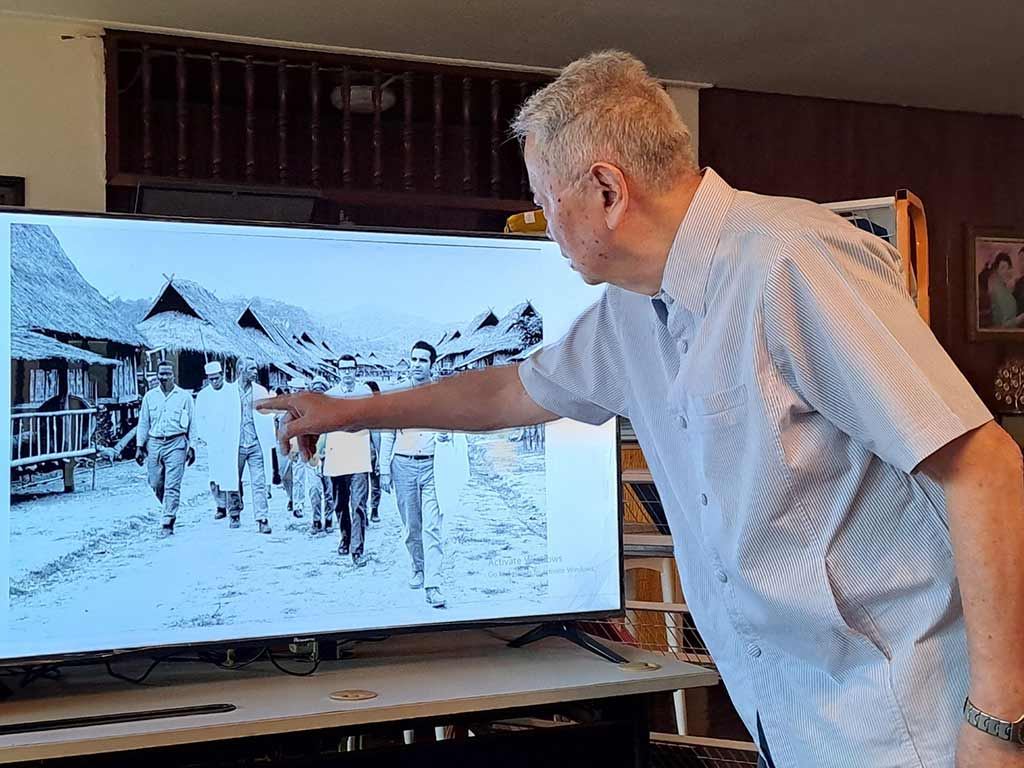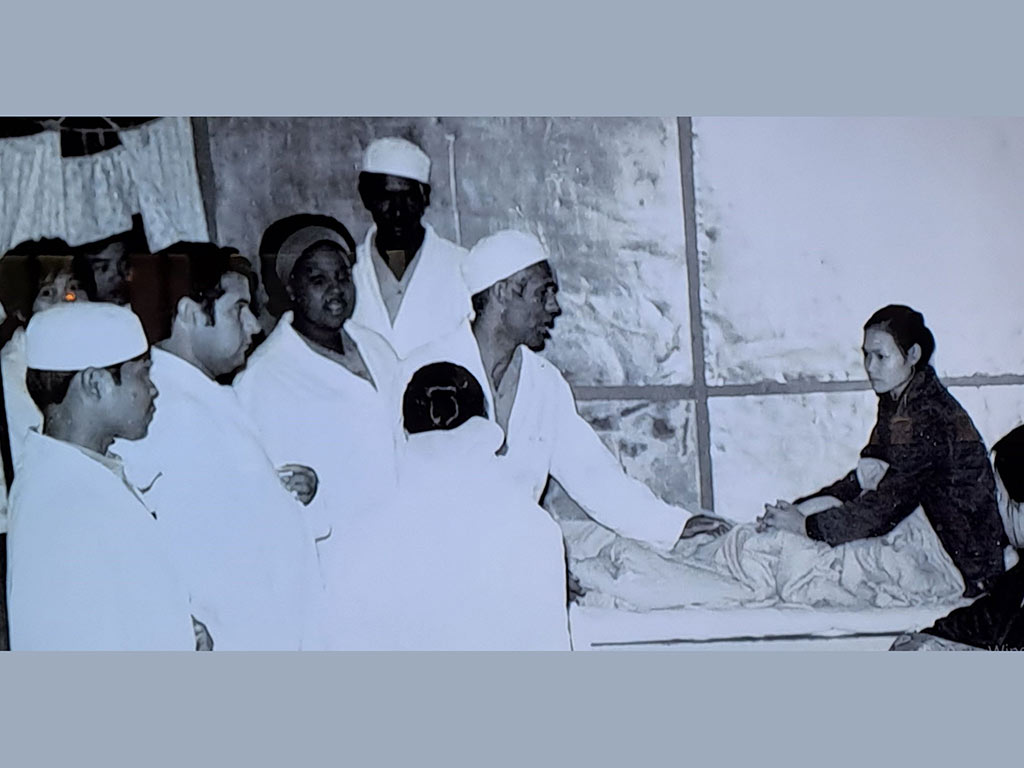
Vientiane, Oct. 24.- When 51 years ago the first Cuban medical brigade arrived in the liberated zone of Laos, the young doctor Pommeck Dalaloy had already served, since its opening in 1972, as director of the Lao-Vietnam Friendship Hospital.
Dalaloy, who studied medicine in France, where he worked, returned to his homeland at the most difficult time: in 1967, when the war had escalated, to put his knowledge at the service of the Lao Patriotic Front, of which he was a member.
An excellent conversationalist, his face lit up when he remembered that just a year after his arrival in liberated territory, his daughter Vathana was born in one of the caves that served as their home.
At that time, the revolutionary forces achieved a very important victory in the so-called battle of Phou Pha Ti, by destroying the radar station of the US air base “Lima Site 85”, located about 1,700 meters above sea level. on the top of a mountain.
From that strategic position, the North American aviation bombings against northern Vietnam and Laotian territory were guided, even when it was at night or under any type of weather condition, hence the significance of said action.
In dialogue with Prensa Latina, the former Laotian Minister of Health (1993-2011) explained that the opening of the hospital in 1972 responded to the need to serve the population of the liberated areas, which by then represented two thirds of the national territory.
The Central Committee of the Patriotic Front of Laos decided to transform the liberated areas into a true State and for this it was necessary to guarantee all basic services, including health, for which help from Cuba was sought.

The first Cuban medical brigade was very well organized and fully responded to the real needs we had at that time, said Dalaloy, who perfectly remembers, with names, surnames and specialty, each of its eight members.
At that time in the entire liberated area there were only six doctors, while there were many patients to be treated for war wounds, unexploded bombs and mines and accidents, in addition to endemic diseases and other common ailments.

So the arrival from Cuba of a pediatrician, an obstetrician, a surgeon, a clinician, two technicians (laboratory and anesthesiology) and two nurses were very helpful.
In all cases, Dalaloy highlighted, they were excellent professionals, highly trained not only theoretically, but also in practice; but above all things they were companions with a high spirit of dedication, responsibility and discipline who remained, from beginning to end, completely dedicated to their human mission.

The high professional, ethical and moral quality, the knowledge demonstrated in daily practice by the Cuban colleagues were admirable, which is why they deserved all the respect of our team, which considered them true friends, he assured.
Dalaloy, who was Laos ambassador to Cuba from 1987 to 1989 and also vice president of the Laos-Cuba Friendship Association, stressed that the arrival of the brigade, at a critical moment, offered the Lao Patriotic Front great moral, practical support. and professional.
“It was a historical event that we greatly appreciate and cannot forget, because the spirit of those comrades was, in addition to being stimulating, a reflection of the internationalism cultivated by Commander Ernesto Che Guevara and, naturally, by the historical leader of the Cuban Revolution, Fidel Castro.”, he remarked.
Dalaloy is proud to know that, even though Laos and Cuba are thousands of kilometers apart, they are two nations with many similarities. “We are geographically very separated, but we are very close,” he said.
And he illustrated his words by remembering that the year 1959 marked milestones in the history of both countries: the Revolution led by Commander in Chief Fidel Castro triumphed on the island. In Laos the reactionary regime imprisoned Prince Souphanouvong and 16 other leaders of the independence Pathet Lao.
In the early 1960s, he added, we both also faced many difficulties. In 1962, Cuba faced the October Crisis and the formal implementation of the economic, financial and commercial bloc imposed by the United States, which still exists today.
Laos at that time remained attentive to a conference in Geneva from which an international agreement on the country's neutrality would emerge, and on the threshold of a conflict that would last until the mid-1970s.
However, more than 50 years have passed since that first meeting with Cuban doctors in the liberated zone and our two nations - he said - survived the aggressions of the superpower, the United States, something that seems incredible, but is real.
“Today we have peace, independence, democracy, unity, and we are on the road to prosperity, despite all the difficulties,” emphasized the veteran fighter before reiterating his deep gratitude for the unconditional support provided to his country by Cuban specialists through successive medical brigades. (Text and photos: PL)